-
 Bitcoin
Bitcoin $115100
-2.99% -
 Ethereum
Ethereum $3642
-1.38% -
 XRP
XRP $3.027
-5.51% -
 Tether USDt
Tether USDt $1.000
-0.05% -
 BNB
BNB $763.4
-1.32% -
 Solana
Solana $177.2
-5.42% -
 USDC
USDC $0.9999
-0.02% -
 Dogecoin
Dogecoin $0.2247
-6.47% -
 TRON
TRON $0.3135
0.23% -
 Cardano
Cardano $0.7824
-4.46% -
 Hyperliquid
Hyperliquid $42.53
-0.97% -
 Stellar
Stellar $0.4096
-6.09% -
 Sui
Sui $3.662
-2.61% -
 Chainlink
Chainlink $17.63
-3.57% -
 Bitcoin Cash
Bitcoin Cash $536.3
2.94% -
 Hedera
Hedera $0.2450
0.34% -
 Avalanche
Avalanche $23.23
-3.15% -
 Litecoin
Litecoin $112.2
-1.23% -
 UNUS SED LEO
UNUS SED LEO $8.976
-0.30% -
 Shiba Inu
Shiba Inu $0.00001341
-2.72% -
 Toncoin
Toncoin $3.101
-2.44% -
 Ethena USDe
Ethena USDe $1.001
-0.05% -
 Uniswap
Uniswap $10.08
-1.97% -
 Polkadot
Polkadot $3.938
-2.77% -
 Monero
Monero $323.9
0.87% -
 Dai
Dai $0.9999
-0.02% -
 Bitget Token
Bitget Token $4.481
-1.69% -
 Pepe
Pepe $0.00001199
-5.94% -
 Aave
Aave $288.2
-0.68% -
 Cronos
Cronos $0.1279
0.36%
How to identify the change signal of daily Bollinger Band narrowing + 60-minute KDJ low-level blunting?
A daily Bollinger Band squeeze combined with 60-minute KDJ blunting at oversold levels signals low volatility and weakening downside momentum, increasing the odds of a bullish breakout in cryptocurrencies like BTC/USDT.
Jul 24, 2025 at 12:50 pm
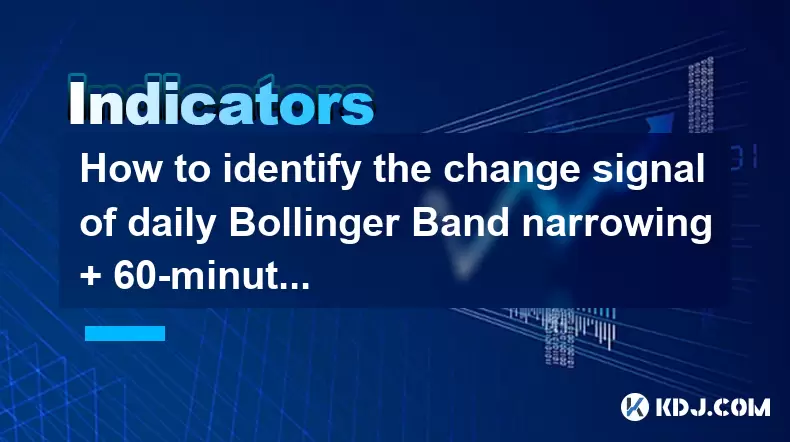
Understanding Bollinger Bands and Their Narrowing Pattern
Bollinger Bands are a widely used technical analysis tool in the cryptocurrency trading space, consisting of a middle band (typically a 20-period simple moving average) and two outer bands that represent standard deviations from the mean price. The distance between the upper and lower bands reflects market volatility. When the bands narrow significantly, it indicates a period of low volatility, often preceding a sharp price movement. This phenomenon is known as the "Bollinger Band squeeze." In the context of daily charts, a narrowing pattern suggests that the market is consolidating, and traders should prepare for a potential breakout. The key is to monitor the bandwidth, which is calculated as (Upper Band - Lower Band) / Middle Band. A decreasing bandwidth over consecutive days signals tightening volatility.
It is crucial to distinguish between normal consolidation and a meaningful squeeze. A true narrowing signal occurs when the bandwidth reaches near its lowest level over the past several weeks or months. Traders can use tools like the Bollinger Band Width indicator to visualize this contraction. During such periods, price action tends to trade in a tight range, and volume may also decline. This environment often sets the stage for a directional move once volatility re-expands. However, narrowing alone is not sufficient to trigger a trade; it must be combined with other confirming signals, such as momentum indicators on lower timeframes.
Interpreting 60-Minute KDJ Low-Level Blunting
The KDJ indicator is a momentum oscillator derived from the Stochastic Oscillator, comprising three lines: %K, %D, and %J. In cryptocurrency trading, the KDJ is particularly useful for identifying overbought and oversold conditions. The 60-minute chart provides a balance between short-term noise and meaningful trend signals. When the KDJ reaches a low-level zone (typically below 20), it indicates oversold conditions. However, the critical signal arises when the %K and %D lines begin to blunt or flatten near this oversold level instead of continuing downward. This blunting suggests that downward momentum is weakening, even if the price has not yet reversed.
To accurately identify blunting, observe the following characteristics on the 60-minute chart:
- The %K line crosses above the %D line after both have been below 20.
- The crossover occurs with the lines moving horizontally or slightly upward.
- The J line, which is more sensitive, starts to rise from extreme lows.
- Volume begins to increase during the blunting phase, confirming potential buying interest.
This pattern implies that sellers are losing control and buyers may soon enter the market. When this occurs during a daily Bollinger Band squeeze, the confluence of signals increases the probability of an upward breakout. The combination suggests that volatility compression is nearing an end, and momentum is shifting from bearish to bullish.
Combining Daily Bollinger Band Squeeze with 60-Minute KDJ Confirmation
To effectively trade this setup, align the signals from both timeframes. Start by confirming the daily Bollinger Band narrowing:
- Check that the bandwidth is at or near a multi-week low.
- Ensure price is trading near the middle or lower band, indicating potential for upward movement.
- Monitor volume trends—declining volume supports the squeeze thesis.
Next, switch to the 60-minute chart to validate the KDJ signal:
- Wait for the KDJ to enter the oversold zone (below 20).
- Observe whether the %K and %D lines show signs of stabilization or upward crossover.
- Confirm that the J line is no longer making new lows.
When both conditions are met simultaneously, the probability of a bullish reversal increases. For example, if Bitcoin has been range-bound for several days with tightening Bollinger Bands on the daily chart, and on the 60-minute chart the KDJ shows a clear blunting after being oversold, this could signal the start of a new uptrend. Entry can be considered when price breaks above the upper KDJ threshold (e.g., 80) or when price closes above the middle Bollinger Band on the daily chart.
Practical Steps to Monitor and Execute the Signal
To implement this strategy, follow these steps using a cryptocurrency trading platform like TradingView or Binance:
- Open the daily chart and apply the Bollinger Bands (20,2) indicator.
- Add the Bollinger Band Width indicator to visually confirm narrowing.
- Switch to the 60-minute chart and apply the KDJ indicator with default settings (9,3,3).
- Set alerts for when the KDJ %K line crosses above %D below level 20.
- Watch for price action confirmation, such as bullish candlestick patterns (e.g., hammer, engulfing).
When the narrowing squeeze and KDJ blunting align:
- Place a limit buy order slightly above the current price to avoid chasing.
- Set a stop-loss below the recent swing low on the daily chart.
- Use a take-profit level based on the width of the Bollinger Bands prior to the squeeze—project that distance from the breakout point.
Ensure that the selected cryptocurrency has sufficient liquidity, such as BTC/USDT or ETH/USDT, to minimize slippage. Backtest the strategy on historical data to assess its reliability under different market conditions.
Common Pitfalls and Risk Management Considerations
Traders often misinterpret Bollinger Band narrowing as an immediate reversal signal, but a squeeze can persist for several days without a breakout. Patience is essential—only act when confirmed by momentum indicators like KDJ. Another mistake is ignoring the broader market context. For instance, if the overall crypto market is in a strong downtrend, a bullish signal on a single asset may fail. Always check Bitcoin’s price action, as it often influences altcoin movements.
False signals can occur when the KDJ blunts but price continues to drop. This may happen during strong bear markets where oversold conditions can remain oversold. To reduce risk:
- Avoid trading during major news events or high-impact announcements.
- Use position sizing to limit exposure—never risk more than 2% of capital on a single trade.
- Combine with volume analysis: a genuine reversal often comes with rising volume.
Frequently Asked Questions
What does Bollinger Band narrowing imply if KDJ is not oversold?
If the daily Bollinger Bands are narrowing but the 60-minute KDJ is not in the oversold zone, the setup lacks momentum confirmation. The squeeze may resolve in either direction, increasing uncertainty. Wait for the KDJ to reach oversold levels before considering a long position.
Can this strategy be applied to altcoins?
Yes, but only to high-liquidity altcoins such as SOL, ADA, or DOT. Low-volume coins may exhibit erratic KDJ behavior and unreliable Bollinger Band signals due to manipulation or thin order books.
How long should I wait for a breakout after the signals align?
There is no fixed timeframe. Monitor the price for at least 24 to 48 hours after the KDJ blunting occurs. If no breakout happens, the signal may be invalid. Reassess the bandwidth and KDJ levels for renewed confirmation.
Should I use leverage when trading this signal?
Leverage amplifies both gains and losses. Given the uncertainty of breakout direction after a squeeze, avoid high leverage. Use conservative leverage (2x or lower) if employed, and always protect with a stop-loss.
Disclaimer:info@kdj.com
The information provided is not trading advice. kdj.com does not assume any responsibility for any investments made based on the information provided in this article. Cryptocurrencies are highly volatile and it is highly recommended that you invest with caution after thorough research!
If you believe that the content used on this website infringes your copyright, please contact us immediately (info@kdj.com) and we will delete it promptly.
- Kiyosaki's Crypto Playbook: Ditching Paper for Real Assets Like Bitcoin
- 2025-07-25 22:30:11
- Satoshi-Era Whales Stir the Bitcoin Pot: What's the Deal?
- 2025-07-25 22:30:12
- Pi Coin Value in Indian Rupees (INR) 2024: Decoding the Hype
- 2025-07-25 21:45:50
- Crypto Investing: Top Picks and Meme Coin Mania in '25
- 2025-07-25 21:52:07
- Ark Invest's Portfolio Rebalance: Coinbase, Block, and the Crypto Shift
- 2025-07-25 21:52:07
- Bitcoin's Wild Ride: Sell-offs, Volatility, and What's Next
- 2025-07-25 21:55:18
Related knowledge

How to interpret that the KDJ D line is downward for a long time but the price is sideways?
Jul 25,2025 at 07:00pm
Understanding the KDJ Indicator and Its ComponentsThe KDJ indicator is a momentum oscillator widely used in cryptocurrency trading to assess overbough...

What does it mean that the KDJ indicator forms a double bottom at a low level?
Jul 25,2025 at 05:08pm
Understanding the KDJ Indicator in Cryptocurrency TradingThe KDJ indicator is a momentum oscillator widely used in cryptocurrency trading to identify ...
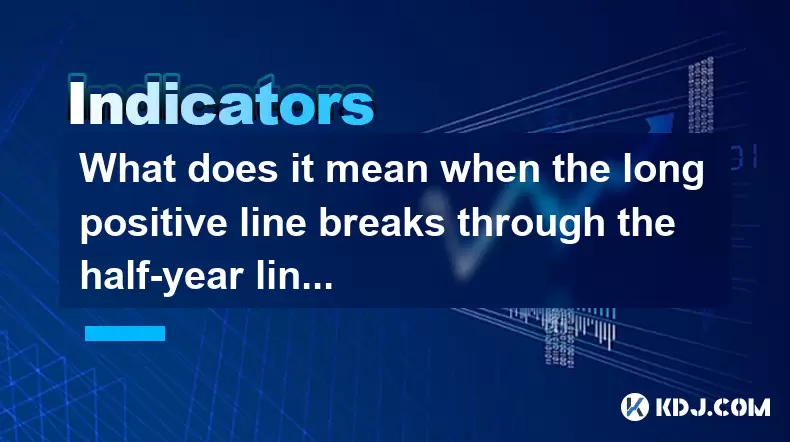
What does it mean when the long positive line breaks through the half-year line and then steps back?
Jul 25,2025 at 06:49pm
Understanding the Long Positive Line in Candlestick ChartsIn the world of cryptocurrency trading, candlestick patterns play a vital role in technical ...
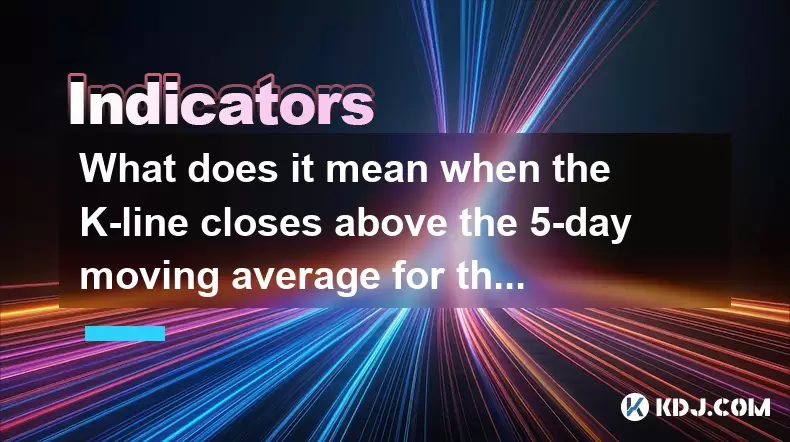
What does it mean when the K-line closes above the 5-day moving average for three consecutive days?
Jul 25,2025 at 10:07pm
Understanding the K-line and 5-day Moving AverageThe K-line, also known as a candlestick, is a critical charting tool used in technical analysis to re...
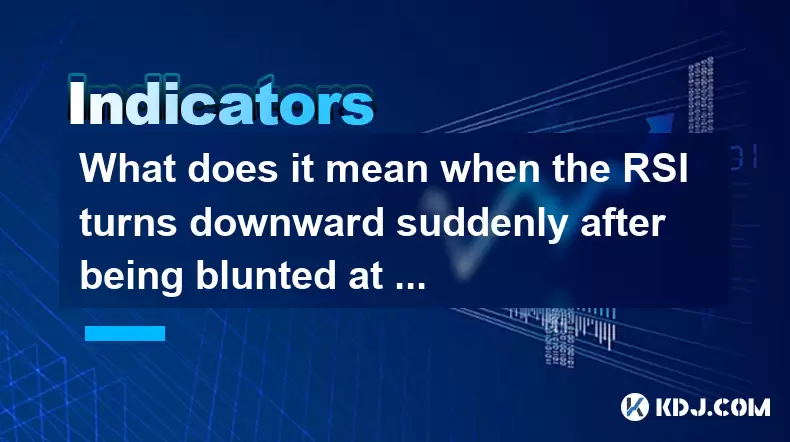
What does it mean when the RSI turns downward suddenly after being blunted at a high level?
Jul 25,2025 at 04:00pm
Understanding the RSI and Its Role in Technical AnalysisThe Relative Strength Index (RSI) is a momentum oscillator that measures the speed and change ...
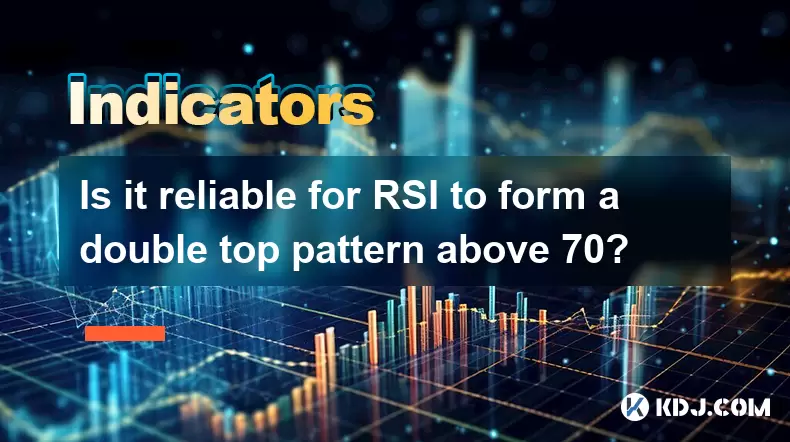
Is it reliable for RSI to form a double top pattern above 70?
Jul 25,2025 at 04:49pm
Understanding the RSI Indicator and Its Role in Technical AnalysisThe Relative Strength Index (RSI) is a momentum oscillator that measures the speed a...

How to interpret that the KDJ D line is downward for a long time but the price is sideways?
Jul 25,2025 at 07:00pm
Understanding the KDJ Indicator and Its ComponentsThe KDJ indicator is a momentum oscillator widely used in cryptocurrency trading to assess overbough...

What does it mean that the KDJ indicator forms a double bottom at a low level?
Jul 25,2025 at 05:08pm
Understanding the KDJ Indicator in Cryptocurrency TradingThe KDJ indicator is a momentum oscillator widely used in cryptocurrency trading to identify ...

What does it mean when the long positive line breaks through the half-year line and then steps back?
Jul 25,2025 at 06:49pm
Understanding the Long Positive Line in Candlestick ChartsIn the world of cryptocurrency trading, candlestick patterns play a vital role in technical ...

What does it mean when the K-line closes above the 5-day moving average for three consecutive days?
Jul 25,2025 at 10:07pm
Understanding the K-line and 5-day Moving AverageThe K-line, also known as a candlestick, is a critical charting tool used in technical analysis to re...

What does it mean when the RSI turns downward suddenly after being blunted at a high level?
Jul 25,2025 at 04:00pm
Understanding the RSI and Its Role in Technical AnalysisThe Relative Strength Index (RSI) is a momentum oscillator that measures the speed and change ...

Is it reliable for RSI to form a double top pattern above 70?
Jul 25,2025 at 04:49pm
Understanding the RSI Indicator and Its Role in Technical AnalysisThe Relative Strength Index (RSI) is a momentum oscillator that measures the speed a...
See all articles

























































































